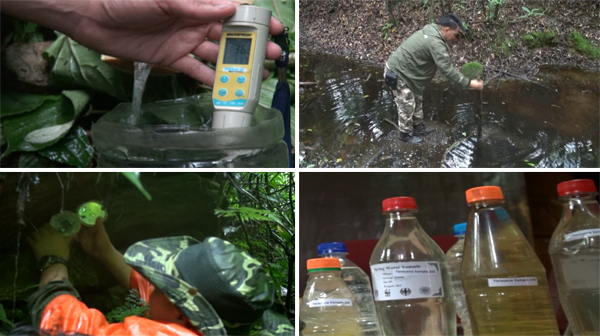 To revive spring water sources, a group of officials from the Tarayana Foundation mapped spring water recharge areas at Tali village of Nangkor Gewog in Zhemgang earlier this week. A recharge area is a place where water is able to seep into the ground and refill water-bearing rocks. Recharge areas are necessary for a healthy spring water source.
To revive spring water sources, a group of officials from the Tarayana Foundation mapped spring water recharge areas at Tali village of Nangkor Gewog in Zhemgang earlier this week. A recharge area is a place where water is able to seep into the ground and refill water-bearing rocks. Recharge areas are necessary for a healthy spring water source.
The officials from the Tarayana Foundation along with the local leaders collected samples and tested the water quality of a drying spring water at Tali. The officials are collecting information on the location and status of water sources to gather basic information for studying the trends and reasons for drying over the years.
Jambay, an expert from the College of Natural Resources said protecting recharge areas is effective in increasing the available water sources, especially during the dry season when precipitation is scarce. He said the approach will ensure a sustainable flow of water. “As of now, we are trying to preserve the water sources by fencing around and we do not know where the recharge point actually happens. So, basically, we are trying to identify the recharge area.”
Following the day-long study with the officials, the local leaders said they are now equipped with the required knowledge to revamp other water sources in the community.
“In the past, our understanding of water source protection only meant protecting or water nearby the water tanks. Now we know that it is different. We need to conserve right from the recharge area and manage,” said Tali Tshogpa Leki Zangmo.
“To conserve and manage our water source means to see the position of rocks nearby. Depending on the position of the rocks, we can find out the recharge areas and see how we can conserve the water source,” said Sangay Dorji, a resident of Tali.
The project is a part of an eight-year project titled Securing High Conservation Values in Southwestern Bhutan. It is part of the International Climate Initiative supported by the German Federal Ministry for the Environment, Nature Conservation and Nuclear Safety (BMU) for the international financing of climate change mitigation and biodiversity. It covers nine districts in Bhutan. So far, they have mapped 35 spring water sources in eight districts. World Wildlife Fund is implementing the project together with the Tarayana Foundation, the Department of Forests and Park Services and the National Land Commission Secretariat.
“In this project, Tarayana Foundation focuses on livelihood component addressing two key challenges of local communities that are securing water resources and mitigating human-wildlife conflict,” said Karma Uden, Project Manager from the Tarayana Foundation.
Once the mapping activities are complete, the nine districts will have a detailed manual book on the spring water recharge areas to serve as a reference guide in future.
Pema Samdrup, Zhemgang
Edited by Phub Gyem






